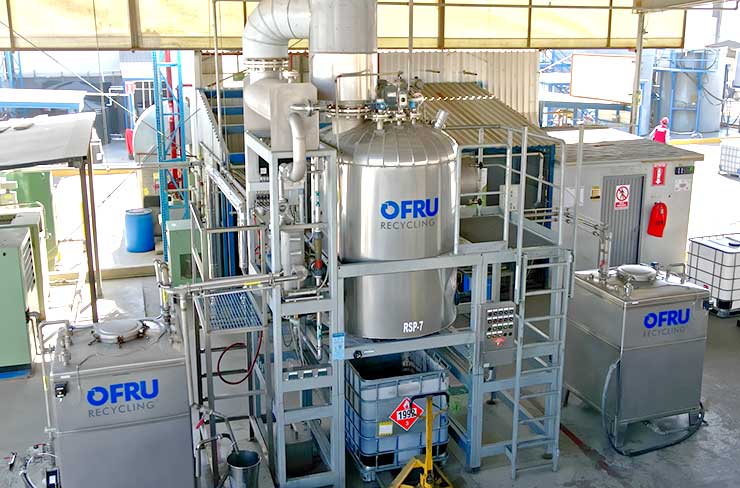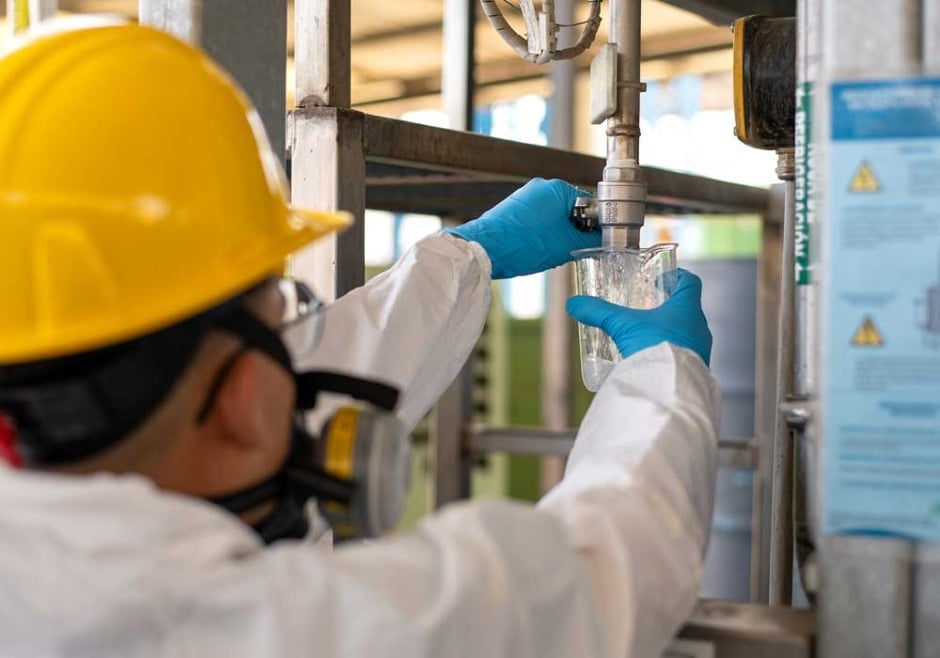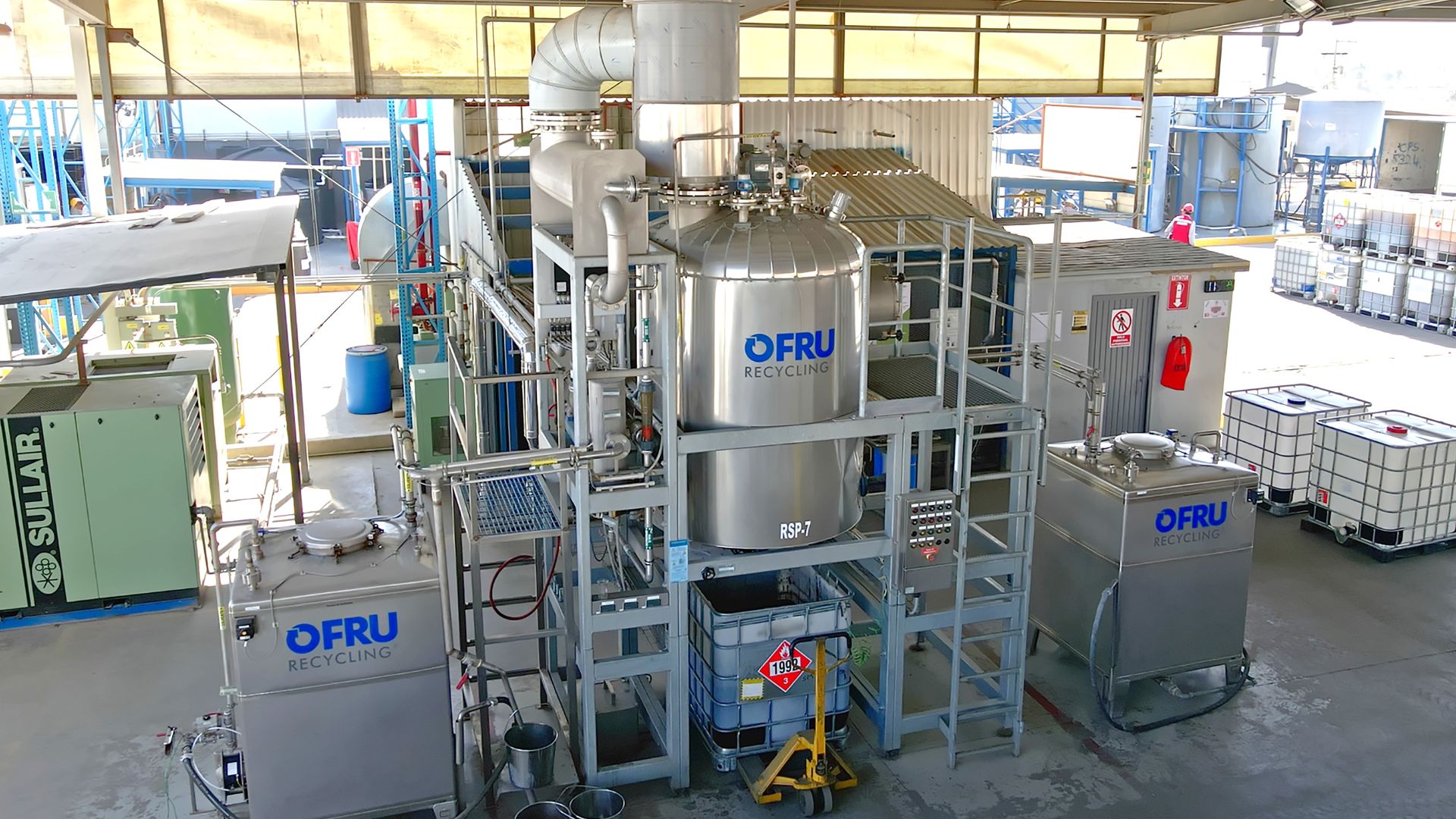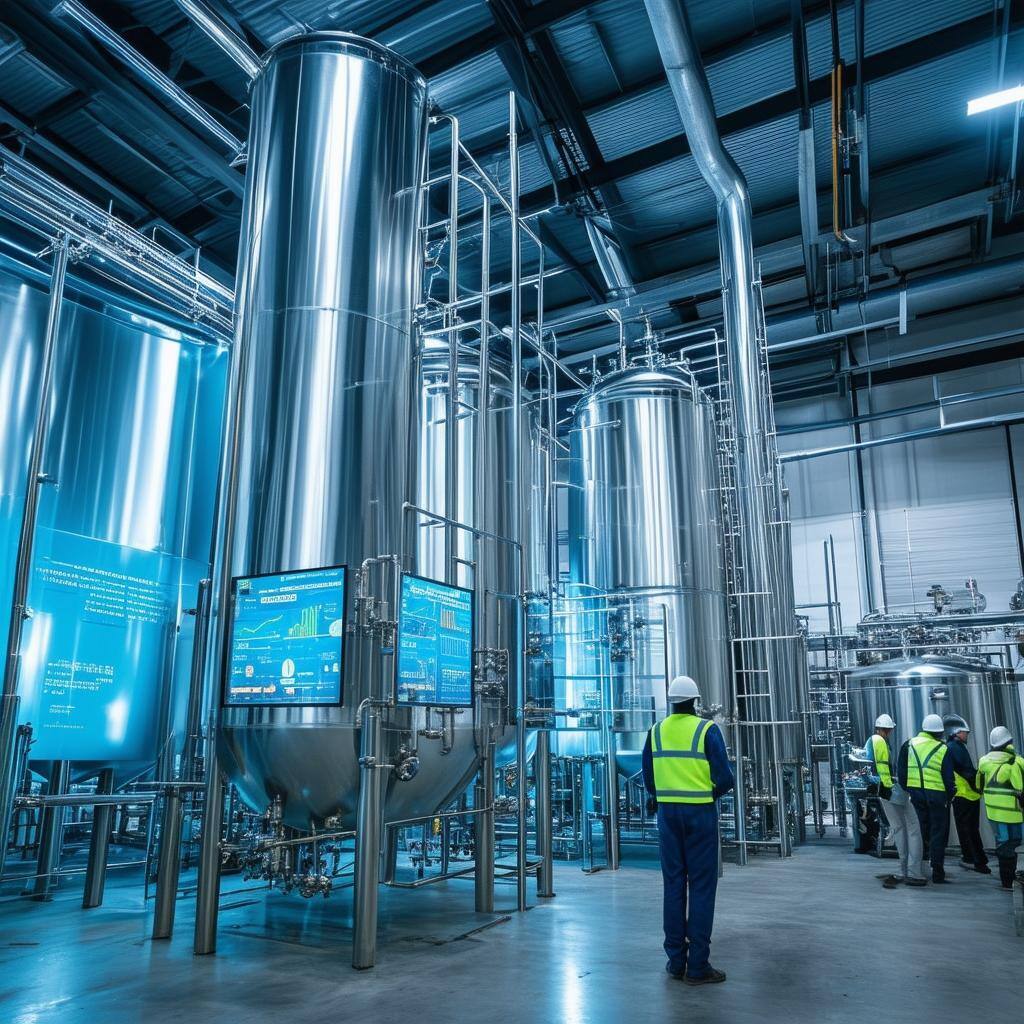Solvent Reclamation And The Charge Toward Zero Waste
Solvent distillation stands out as a key technique in reclaiming valuable solvents and minimizing environmental impact.

A solvent vapor recovery system is a critical component in industrial waste management, reclaiming solvents instead of disposing of them.
These systems operate on the principle of solvent distillation, where waste solvents are separated, purified and collected for reuse. By doing so, industries can minimize waste, reduce costs and promote environmental sustainability.
Yet a solvent reclaiming unit is only as effective as the technology and expertise behind it. Working with a disposal service partner that utilizes advanced recovery systems and has the technical knowledge to optimize the process is key to meeting your company’s strong commitment to sustainability.
Here’s a look at how a solvent vapor recovery system works, the benefit of sending your solvent waste to a disposal service provider and why the partner you choose for your business matters.
At Samex, ever-improving technology allows us to provide clients with state-of-the-art disposal services through solvent distillation. This process ensures everything is used and nothing is wasted.
distillation. This process ensures everything is used and nothing is wasted.
Our solvent vapor recovery system consists of several key components that harmoniously work together to take recycling and sustainability to the next level.
Here are some common components of a solvent reclaiming unit:
Each of these components plays a crucial role in creating an efficient solvent vapor recovery system. Let’s now take a look at the overall process.
The solvent recovery system operates through four main stages:
By following this process, solvent recovery services help businesses reduce their reliance on new raw materials while minimizing the disposal of hazardous waste.
Businesses must make critical decisions about how to manage their hazardous waste, balancing regulatory compliance with cost efficiency, sustainability goals and operational needs.
with cost efficiency, sustainability goals and operational needs.
Working with a waste management service that offers a solvent vapor recovery system can provide your company with a strategic solution that not only helps meet environmental regulations but also reduces waste, cuts costs and enhances workplace safety.
Here are some of the most significant advantages of sending your industrial waste to a solvent vapor recovery system.
One of the primary benefits of solvent recovery is the significant reduction in industrial waste. Instead of disposing of spent solvents, businesses can reclaim and reuse them, minimizing their environmental impact.
Solvent recovery helps businesses lower their operational costs by reducing the need to purchase new solvents. Over time, this results in substantial financial savings, making solvent recovery a cost-effective waste management solution.
Many industries are subject to strict environmental regulations regarding hazardous waste disposal. By sending spent solvents to a facility that offers a solvent vapor recovery system, companies can ensure compliance with environmental laws, avoiding potential fines and legal issues.
Recovering and reusing solvents aligns with sustainable business practices. It reduces the demand for virgin solvents, which, in turn, decreases the environmental footprint associated with solvent production and disposal.
By reducing the amount of hazardous waste stored on-site, solvent recovery systems improve workplace safety. Fewer flammable or toxic solvents mean a lower risk of spills, fires or exposure to harmful substances.
Many solvents can be effectively recovered and reused through a vapor recovery system. Some of the most commonly recycled solvents include:
While the solvent vapor recovery system itself can provide numerous benefits, choosing the right service provider is equally important. Businesses should look for a waste management company that prioritizes:
Cradle-to-grave responsibility also means that your business remains legally and financially accountable for hazardous waste from the moment it is generated until its final disposal. This makes choosing a solvent recovery partner a crucial decision. If your provider mishandles waste at any stage, your company could still face regulatory penalties, environmental liabilities and reputational damage.
To minimize risk, work with a solvent recovery company that adheres to strict compliance standards and offers full transparency in waste tracking. A reputable provider will ensure that all recovered materials are handled properly, maintain detailed records and follow best practices for safe disposal or reuse.
By selecting a responsible partner, you can reduce liability, support your sustainability plan, and protect your business from potential legal and financial consequences.
A solvent vapor recovery system is an effective solution for businesses looking to reduce waste and improve sustainability. By reclaiming and reusing solvents, industries can minimize their environmental impact while maintaining regulatory compliance.

Solvent distillation stands out as a key technique in reclaiming valuable solvents and minimizing environmental impact.

Discover the environmental advantages of solvent distillation for recycling and how it contributes to a sustainable future.

In industries where solvents are essential for extraction, handling these chemicals responsibly is crucial.